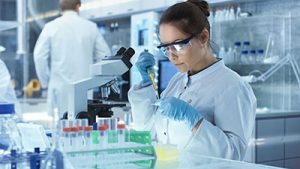Women have dreamed about ending menopause since time began and thanks to science, technically it’s possible through three different processes. While this may mean an end to hot flashes, it also means that periods will also return.
Scientists have found a way to potentially restore fertility to women previously thought to be infertile. And according to their research, so far, it’s working. Hot flashes, night sweats, weight gain, and menopausal-related bone loss will be a thing of the past. Instead, women will have their periods restored and thus can continue on their child-bearing years longer than before.
While this may not be a desire or need for many menopausal women, for some women who encounter the onset of early menopause by their mid-30s, it may offer a bit of hope for women looking to start a family later in life.
When Menopause Begins
Women entering the change early deal with the physical side effects of menopause, in addition to the psychological side of it as well. Women going through the change early begin to feel old and may experience infertility, even if they’re only in their 30s.
When the change begins, egg quantity and quality diminish. The ovaries overproduce the hormones estrogen and progesterone, which drowns the pregnancy hormone. This hormone imbalance can have the effect of irregular ovulation times.
What Have the Studies Found?

During the study, a team in Athens treated approximately 30 women, ages 46 to 49. Six months after being treated with this procedure, a woman had her period after five years of menopause and another patient become pregnant with twins.
While this concept sounds ground-breaking, this type of work is not a new procedure. Doctors in sports medicine have been using centrifuged blood for years. When applied to a sports injury, the plasma uses the body’s own tissue to facilitate healing. The yellowish substance present in healing wounds is the result of these platelets.
The Science Behind Platelet-Rich Plasma
Blood contains more than just red blood cells, it contains iron, growth factors, platelets, white blood cells, stem cells, healing proteins, as well as plasma and much more.
A centrifuge can be spun in a specific way depending on what doctors and researchers want to separate from the blood. Generally, a tube of blood separates by itself, with the red blood cells on the bottom. Next are a layer of white blood cells, and on top is yellowish plasma.
Once the plasma with platelets is separated, and in this case performed by a Harvard medical team, is injected into the woman’s ovary, stem cells are activated. When stem cells are activated by the blood’s growth factors, they can morph into any cells the body needs. In this case, they change into ovarian stem cells. The woman’s own stem cells stimulate the ovaries to produce new mature eggs.
Benefits of PRP Injections
PRP is autologous, meaning it comes from the patient’s body, so it is natural and the injections carry few risks. If women don’t want to become pregnant, but wish to reverse the signs of aging, PRP can help. Aging adversely affects the skin, making it thin and susceptible to bruising. The heart suffers from its own diseases. Add to that aging bones which become brittle and delicate as we age.
With the use of PRP injections, there can be a reverse to the effects of aging, plus women suffering from menopausal symptoms will appreciate a decrease or alleviation altogether of hot flashes.





